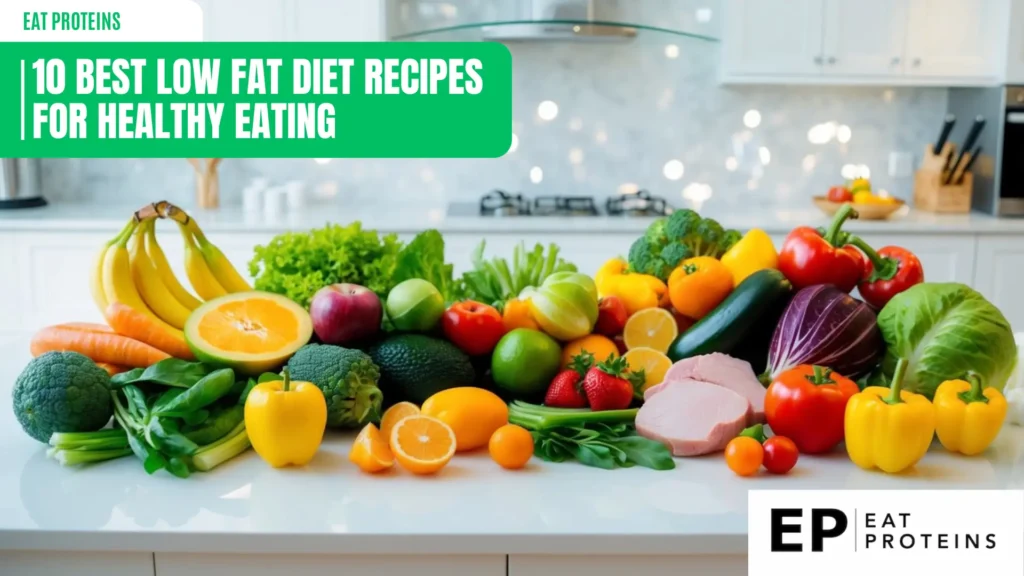
Low-fat diets can be a great way to maintain a healthier lifestyle while still enjoying delicious meals. I believe many people seek enjoyable recipes that help reduce fat intake. This article showcases ten of the best low-fat diet recipes that are simple to make and satisfying to eat.
Creating meals that are both tasty and low in fat may seem challenging, but it is definitely possible. I want to share recipes that focus on fresh ingredients, balanced flavors, and nutritious options that anyone can cook at home. Each recipe is designed to make healthy eating easier and more enjoyable.
1. Grilled Chicken Salad
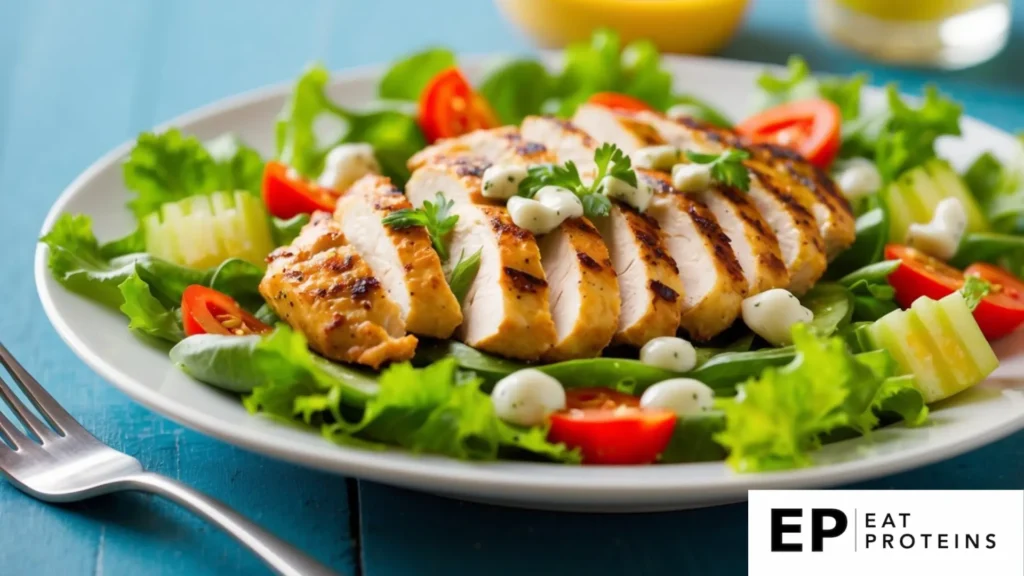
Grilled chicken salad is a healthy and tasty dish that I enjoy making. This salad combines lean protein, fresh vegetables, and a light dressing, making it a great choice for a low-fat diet.
To prepare this salad, I usually start with boneless, skinless chicken breasts. Grilling them adds flavor without adding fat. The process is easy and quick.
Here are the basic steps:
- Marinate the Chicken: I mix olive oil, lemon juice, garlic, salt, and pepper. I let the chicken marinate for at least 30 minutes.
- Grill the Chicken: I preheat the grill to medium-high heat. I cook the chicken for about 6-7 minutes on each side until it reaches an internal temperature of 165°F.
- Prepare the Salad Base: While the chicken cooks, I chop my favorite vegetables. I often use lettuce, tomatoes, cucumbers, and bell peppers.
- Assemble the Salad: Once the chicken is done grilling, I slice it and place it on top of the mixed vegetables.
- Dress the Salad: Finally, I drizzle a low-fat dressing over the top and toss everything gently.
This dish is not only easy to make but also satisfying and nutritious.
2. Vegetable Stir Fry
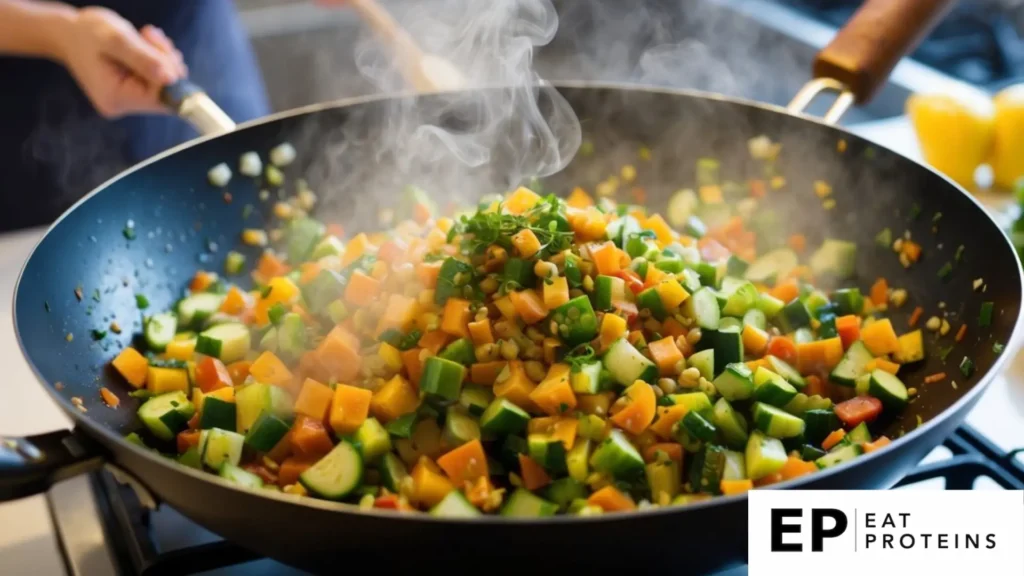
A vegetable stir fry is a quick and healthy dish. It involves cooking a variety of vegetables in a hot pan with a small amount of oil. This method keeps the veggies crisp and flavorful while using minimal fat.
I find vegetable stir fry easy to make. You can use any combination of vegetables, such as bell peppers, broccoli, and carrots.
Here are the simple steps I follow:
- Prepare your ingredients: Chop your vegetables into even-sized pieces.
- Heat the pan: Add one tablespoon of oil to a preheated wok or skillet.
- Cook the vegetables: Add the hardest vegetables first, like carrots, and stir fry for about 2-3 minutes.
- Add remaining veggies: Add softer vegetables, like bell peppers, and continue to stir fry for another 2-3 minutes.
- Season: Add soy sauce or your favorite low-fat sauce, and cook for an additional minute.
This dish is flexible, allowing me to mix in different flavors or proteins, such as tofu. Using fresh vegetables makes it both nutritious and satisfying.
3. Baked Salmon with Herbs

Baked salmon with herbs is a simple and healthy dish. Salmon is a good source of protein and omega-3 fatty acids, which are beneficial for heart health. This recipe is easy to follow, making it perfect for any home cook.
To make baked salmon with herbs, I start with fresh or frozen salmon fillets. I recommend two pounds for a satisfying meal.
Here are the steps I follow:
- Preheat the oven to 500°F (260°C).
- Place the salmon on a baking sheet lined with parchment paper.
- Drizzle two tablespoons of olive oil over the fillets.
- Sprinkle with salt, pepper, and a blend of herbs, like parsley and thyme.
- Bake for 8 to 10 minutes, until the salmon flakes easily with a fork.
This dish pairs well with vegetables or a light salad. Enjoy this healthy meal that is both flavorful and easy to prepare.
4. Quinoa and Black Bean Chili
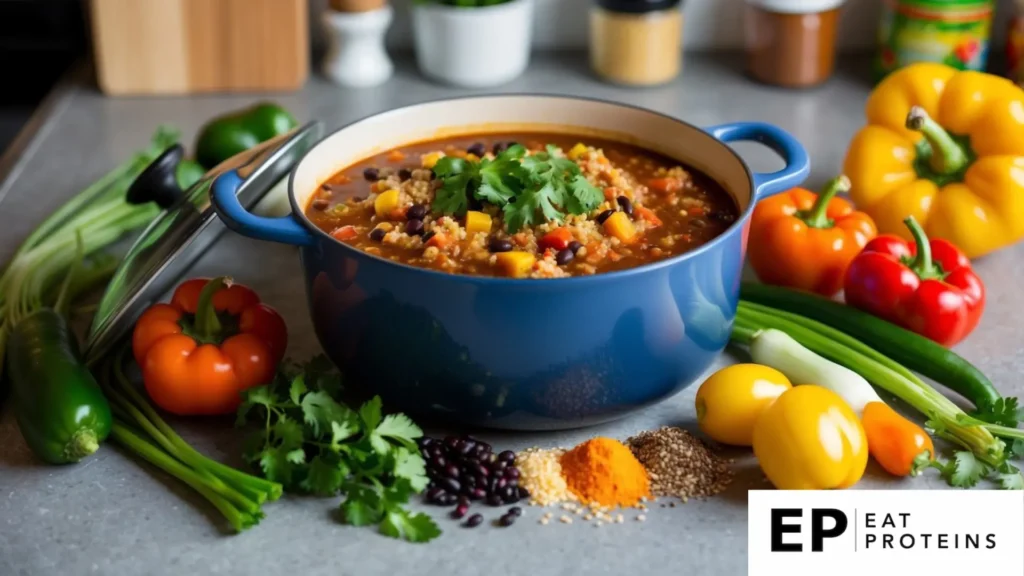
Quinoa and black bean chili is a hearty and nutritious dish. It combines protein-rich quinoa with black beans and spices. This meal is great for those looking for a low-fat option.
Making this chili is easy and quick. I enjoy how it only takes about 30-40 minutes from start to finish.
Here are the simple steps to prepare it:
- Rinse 1 cup of quinoa and add it to a pot with 2 cups of vegetable broth.
- Bring the mixture to a boil, then reduce to a simmer for about 15 minutes.
- In another pan, heat 1 tablespoon of olive oil. Add chopped onion, bell pepper, and garlic. Cook for about 5 minutes.
- Stir in 1 can of drained black beans, 1 can of diced tomatoes, and seasonings like cumin and chili powder.
- Combine the cooked quinoa with the vegetable and bean mix.
- Simmer for an additional 10 minutes to let the flavors blend.
This recipe is satisfying and perfect for meal prep. It’s versatile, so I can adjust the spices to my taste.
5. Spaghetti Squash Primavera
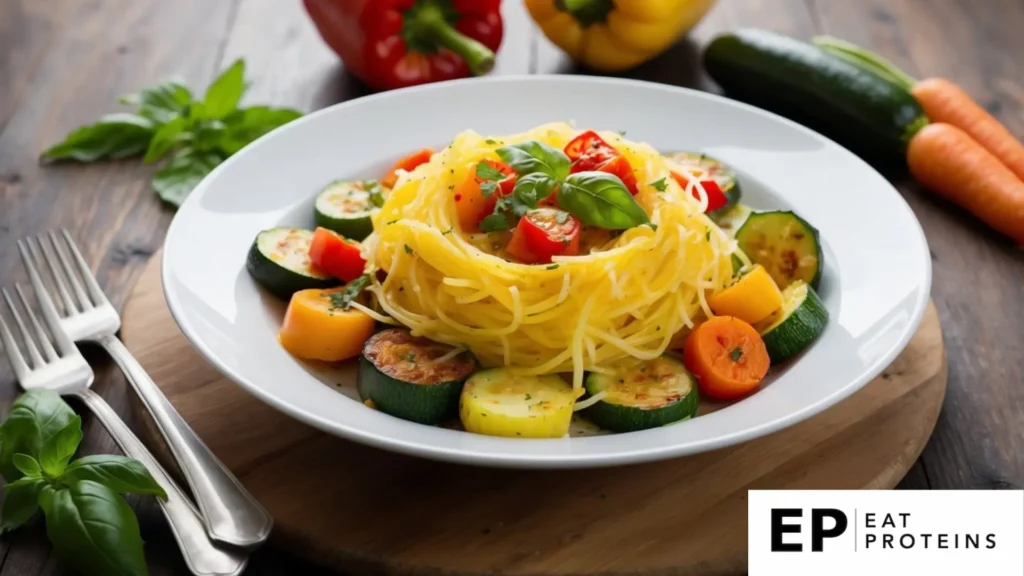
Spaghetti Squash Primavera is a nutritious dish that incorporates vegetables into a low-fat diet. The squash has a stringy texture resembling spaghetti when cooked, making it a great substitute for traditional pasta.
Making Spaghetti Squash Primavera is easy and quick. I enjoy preparing it because it requires minimal ingredients and only takes about 30 minutes from start to finish.
To cook, I start by preheating the oven to 400°F (200°C). Next, I cut the spaghetti squash in half and scoop out the seeds. I place the halves cut-side down on a baking sheet and roast for about 20-25 minutes.
While the squash is baking, I prepare the primavera. I sauté my favorite seasonal vegetables like bell peppers, zucchini, and carrots in a non-stick pan with a little vegetable broth for about 5-7 minutes.
Once the squash is done, I scrape the insides with a fork to create spaghetti-like strands. I then mix the cooked vegetables with the squash. A sprinkle of herbs like basil or oregano adds flavor.
This dish is not only tasty but also satisfying without being high in fat.
6. Zucchini Noodles with Pesto

Zucchini noodles, also known as zoodles, are a low-carb alternative to pasta. They are made by spiralizing fresh zucchini into thin strands. This dish is simple, healthy, and quick to prepare.
To make zucchini noodles with pesto, I follow these easy steps:
- Prepare the Zucchini: Wash 2 medium zucchinis. Use a spiralizer to turn them into noodles.
- Sauté the Noodles: Heat 1 tablespoon of olive oil in a pan over medium heat. Add the zucchini noodles and sauté for 2-3 minutes until slightly tender.
- Make the Pesto: In a blender, combine 1 cup of fresh basil, 2 tablespoons of pine nuts, 1 clove of garlic, and 3 tablespoons of olive oil. Blend until smooth. Add salt to taste.
- Combine: Toss the sautéed zucchini noodles with the pesto, mixing well.
This dish is not only easy to make but also delicious and nutritious. I often enjoy it as a light lunch or dinner option.
7. Greek Yogurt Parfait

A Greek yogurt parfait is a delicious and healthy breakfast or snack. It combines Greek yogurt, fruits, and granola. This dish is low in fat and full of nutrients.
Making a Greek yogurt parfait is easy. I usually take about 10 minutes to prepare it. Here are the simple steps I follow:
- Start with 1 cup of Greek yogurt. Choose plain, low-fat yogurt for a healthier option.
- Add 1 cup of mixed fruits. I like to use berries, bananas, or apples.
- Layer 1/2 cup of granola on top. Look for low-fat or whole-grain granola.
I like to repeat the layers for a pretty presentation. This parfait is not only tasty but also visually appealing. It’s a great way to enjoy a healthy treat. Plus, I can customize it with my favorite fruits and toppings.
8. Stuffed Bell Peppers
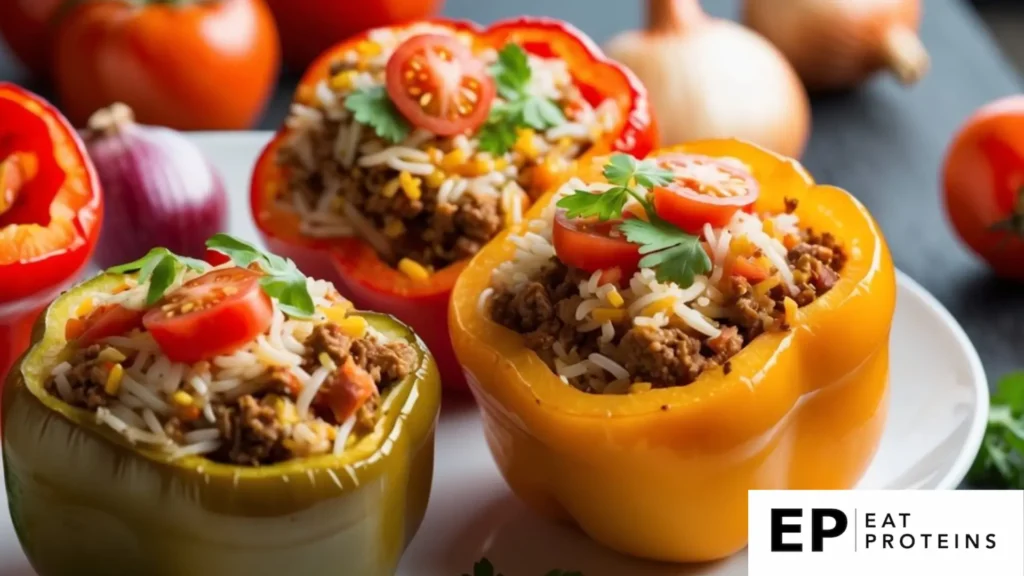
Stuffed bell peppers are tasty and healthy. They are a great low-fat meal option. I enjoy making them because they are easy to customize.
To make stuffed bell peppers, I usually start with a few basic ingredients. I use bell peppers, lean ground turkey or chicken, rice, and some veggies like onions and tomatoes.
Here are the steps I follow:
- Preheat the oven to 375°F (190°C).
- Cut the tops off the bell peppers and remove the seeds.
- Cook 1 cup of rice according to package instructions.
- In a pan, cook 1 pound of lean meat with chopped onions until fully cooked.
- Mix the rice, meat, and diced tomatoes in a bowl.
- Stuff the mixture into each bell pepper.
- Place the peppers upright in a baking dish and cover with foil.
- Bake for 25-30 minutes until the peppers are tender.
These stuffed bell peppers are a filling and satisfying meal. I love how I can use whatever ingredients I have on hand. They make a great addition to my low-fat diet.
9. Lentil Soup
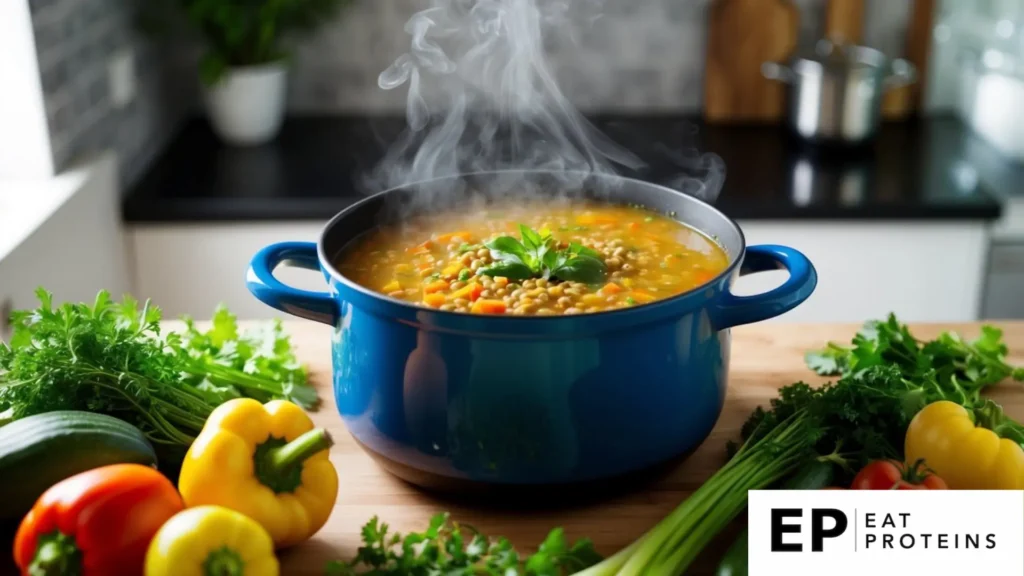
Lentil soup is a nutritious dish made primarily from lentils, which are small legumes. They are known for being low in fat and high in protein and fiber. This makes lentil soup a good choice for a low-fat diet.
Making lentil soup is easy. I can prepare it in about 30 minutes. Here’s how I do it:
- Rinse 1 cup of lentils under cold water.
- In a large pot, heat 1 tablespoon of olive oil.
- Add 1 chopped onion, 2 minced garlic cloves, and cook for about 3 minutes.
- Stir in 2 chopped carrots and 1 chopped celery stalk, cooking for another 5 minutes.
- Add the rinsed lentils, 4 cups of vegetable broth, and 1 teaspoon of cumin.
- Bring to a boil and then reduce heat. Let it simmer for 20 minutes.
The result is a warm, filling soup that is easy to customize. I can add different vegetables or spices based on my taste. Enjoying a bowl of lentil soup feels satisfying and healthy.
10. Mango Salsa with Grilled Fish
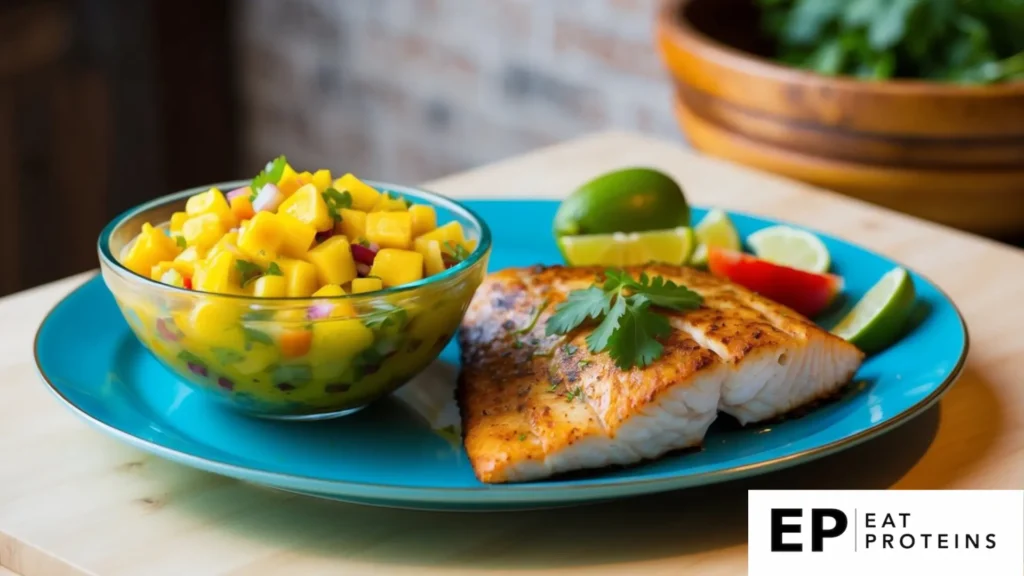
Mango salsa is a fresh and colorful topping that pairs well with grilled fish. It adds a burst of flavor and nutrition, making a delicious low-fat meal.
To make this dish, I start with ripe mangoes. They are sweet and juicy, which balances nicely with the savory fish. The salsa usually includes ingredients like red onion, cilantro, lime juice, and jalapeños.
Making mango salsa is quite easy. Here’s how I do it:
- Dice 1 ripe mango.
- Chop 1/4 cup of red onion.
- Add 1/4 cup chopped cilantro.
- Squeeze the juice of 1 lime over the mixture.
- If I want some heat, I add a chopped jalapeño.
Next, I grill my fish. I usually use tilapia or salmon because they are light and healthy.
- Preheat the grill to medium heat.
- Season the fish with salt and pepper.
- Grill for about 4-6 minutes per side, until cooked through.
Once the fish is ready, I serve it topped with the mango salsa. This dish is simple to make and perfect for a low-fat diet.
What Are the Benefits of Low Fat Diets?
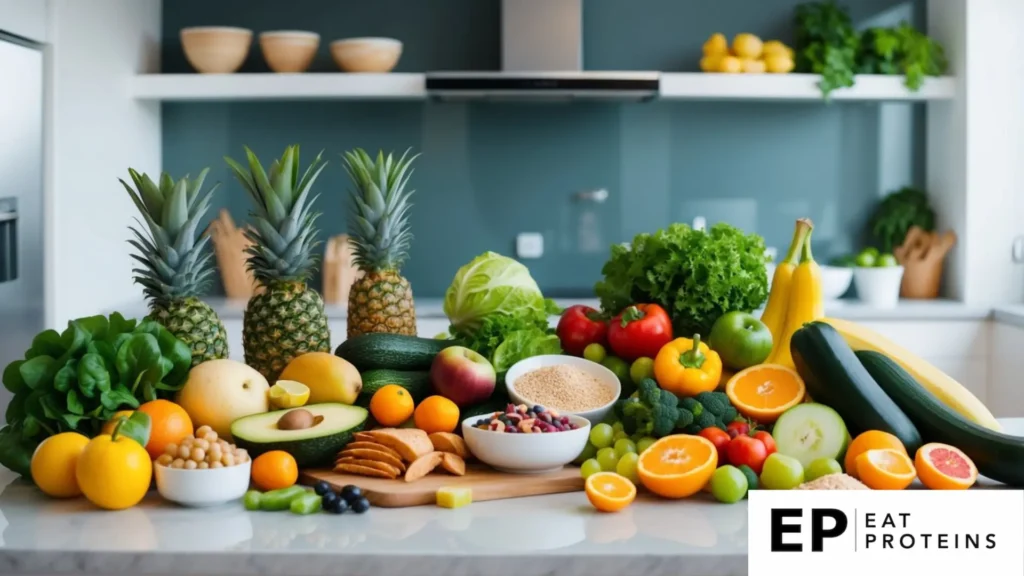
Low fat diets can offer various advantages for those looking to improve their health and manage their weight. I will explore how managing fat intake can lead to better health outcomes and help with weight control.
How Can You Understand Fat Intake in a Low Fat Diet?
Fat is an essential nutrient in our diet, but being selective about the type and amount is key. I focus on reducing saturated and trans fats while incorporating healthy fats, like those from avocados and nuts. Research suggests that keeping fat intake below 30% of total calories can support weight loss.
A low fat diet often encourages the consumption of whole foods, fruits, and vegetables that are lower in calories. This shift not only helps reduce fat intake but also increases vitamins and minerals in my meals. When I prioritize low fat options, I find it easier to maintain a balanced diet that supports my overall health.
What Are the Health Advantages of a Low Fat Diet?
Following a low fat diet can improve heart health by lowering cholesterol levels. Studies show that diets rich in healthy fats, such as those found in fish and olive oil, can lead to better cardiovascular outcomes. In my experience, switching to low fat options has contributed to better blood pressure and reduced the risk of heart disease.
Additionally, lower fat diets can assist with weight management. With fewer calories from fat, I often find it easier to create a calorie deficit, which can lead to weight loss. Many low fat recipes are also packed with fiber, helping me feel full longer. This combination makes it simpler to stick to healthier eating habits.
How Can You Implement Strategies for Reducing Fat in Meals?
Reducing fat in meals can be achieved through careful ingredient choices and cooking methods. By making simple substitutions and applying effective techniques, I can create low-fat recipes without sacrificing flavor.
What Ingredient Substitutions Help in a Low Fat Diet?
One of the easiest ways to reduce fat is by swapping high-fat ingredients for healthier options. Here are some common substitutions:
- Dairy: Replace whole milk or cream with low-fat or almond milk. Greek yogurt can be a great substitute for sour cream.
- Fats: Use applesauce or mashed bananas in baked goods instead of butter or oil. This keeps moisture and sweetness while cutting calories.
- Meat: Choose lean cuts of meat such as chicken breast or turkey instead of fatty cuts like pork belly or ribeye. I can also use tofu or beans for protein in meals.
These swaps not only lower fat content but also introduce new flavors and textures.
What Ingredient Substitutions Help in a Low Fat Diet?
Cooking methods also play a crucial role in fat reduction. Here are some techniques I like to use:
- Grilling or Baking: Cooking on a grill or in the oven allows excess fat to drip away. It gives food a nice char without added oils.
- Steaming: This technique helps maintain nutrients without any added fats.
- Sautéing with Broth: Instead of using oil, I can sauté vegetables in vegetable or chicken broth. This adds moisture and flavor without extra calories.
By incorporating these techniques, meals become lighter and healthier while still being delicious.
